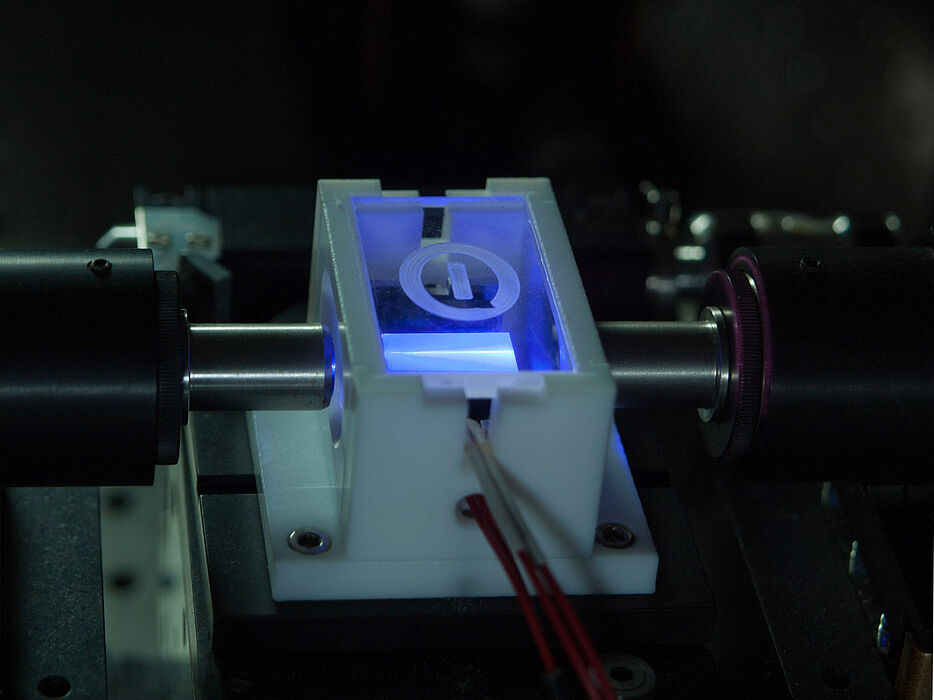By probing the colour content of photons (single quanta of light) in a quantum-coherent manner, it is possible to examine and exploit complex light systems and quantum correlations in new ways. An important tool in the quantum-rainbow toolbox has recently been demonstrated with individual photons by the Integrated Quantum Optics group, led by Prof. Dr. Christine Silberhorn at Paderborn University.
This device, known as a quantum pulse gate and <link https: doi.org oe.19.013770>originally proposed by the group in 2011, is capable of measuring not only the overall colour of a single photon, but the complete colour spectrum, which can be imagined as the photon's <link https: www.oxfordsparks.ox.ac.uk content what-are-quantum-rainbows>quantum rainbow. By adapting what shape of spectrum is measured, the group was able to reconstruct the quantum wavefunction of single photons, even if the complete quantum state was "hidden" from standard colour measurements. This research was recently published in <link https: doi.org physrevlett.120.213601>Physical Review Letters, and is available for open access on the <link https: arxiv.org abs>arXiv.
The quantum pulse gate is enabled by carefully controlling the speed of light pulses that travel through a lithium niobate waveguide. The selection of a specific quantum rainbow inside the waveguide is then enabled by molding the colour spectrum of strong ultrashort control laser pulses. The same techniques can also be used to shape the quantum colour correlations between paired photons generated in nonlinear waveguides. Progress in this fast-evolving field was recently reviewed by members of the group and published in the journal <link https: doi.org optica.5.000534>Optica, where it is available for open access.
These techniques have many promising applications. For example, by measuring the entire colour spectrum of quantum light rather than individual colours, new measurement schemes that are more robust and precise than current approaches can be realised. Moreover, by encoding quantum information in different quantum rainbows, it is possible to extend the capacity and robustness of quantum communication, which promises secure encryption guaranteed by the laws of physics.
This research was funded by the European Union (EU) Horizon 2020 research and innovation program under grant agreement No. 665148, also known as the QCUMbER program.

